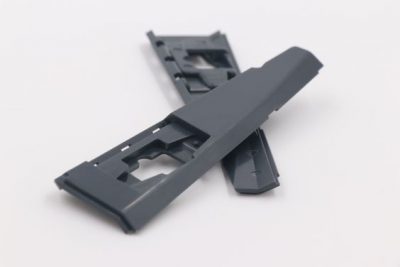Manufacturing is the industry where thinking ahead is rewarded with new business ventures. Everyone is trying their best to come up with new ways to deal with the needs of their clients even before they ask for these solutions. There is no written rule on how to prototype injection molding will work for the best for specific projects, and thinking about new solutions for past issues is a way to make sure that our operation is unaffected by these problems again.
One of the best achievements of any designer team is having a toolkit that can handle iterative prototyping. This prototyping method works on the design stage to test, analyze, and refine a product until it performs as required by our clients. It’s probably the best method to ensure functionality as well as safety. As it turns out, it’s also an ongoing source of fascinating benefits of unplanned and unintended solutions for problems that have yet to affect any project.

injection molding parts, *picture from rubber-keypad.com
The Best Trade Secret in Manufacturing
As you can probably imagine by now, the best value of this prototyping method comes from the ongoing feedback of potential users during the design process. The inherent hidden value that is not discussed by many is how iterative prototyping works both as a learning curve and set the pillars to build something entirely new. For manufacturers, this is probably the best trade secret they can have, but the cat gets out of the bag only once, since every tinkering that is done in this market can be reverse-engineered.
If you take a moment to appreciate the big picture on this regard, this something good that keeps everyone in their toes and ready to provide the best service possible when it comes to manufacturing projects. Designers face the challenge of convincing their clients about the feasibility of their creations. Clients are hesitant to adopt new ideas unless designers can prove it works. Iterative prototyping can help in that regard by offering the tools to sell even the most outrageous solutions with hard data in hand.
The Road to Improve Prototype Injection Molding
There is a lead time nearing zero in 3D printing when it’s used as a prototyping method. This gives an opening to the designer to iterate on his terms and create other types of prototypes to send them to their clients to get feedback. Every new iteration helps to gather data that can be used by the designer to discuss with the client to give a try to his concept and back up his idea. When things work out, the designer can incorporate the feedback of the client in the next iteration to get new insight.
This ongoing cycle of design, creating new prototypes, tests and feedback are set to continue until the client is convinced of the functionality of the product and all the milestones of the project have been reached, at least in the development phase. This is very helpful when it comes to bonding with clients. Business wise, a client that experiences this type of attention and sees the product improves upon his observations is bound to be more confident about the new ideas brought up by the designer team and to approve the final design.
The pacing on this process makes it easy for progressive designers to advance with new solutions for old problems and to improve the way things are done and even make them the new norm. The client, on the other hand, gets the recognition of being motivated enough to have a product that performs better while having proof of concept with historical data about the performance of their product even before it launches. It’s the way of the future, and one of the best ways to avoid wasting time when innovations come along. The way we see it, it’s a win-win scenario on both ends, as long as there is the patience for it to be appropriately developed.
The Designer/ Client/ User Triangle
The triangle is the basic structure of any life cycle of production. It begins with the design phase, and it goes well into the manufacturing stage. All the parties involved need to keep open channels of communication that are assertive and effective. Iterative prototyping relies heavily on the experience of the three actors, and it brings incredible results when things work out. It doesn’t even have to be a logistical nightmare. As long as there is a willingness to offer proper feedback at a timely fashion, everything should go smooth as silk.
3D printing and rapid prototyping have changed the face of the manufacturing industry for good since both technologies were adopted, but it can do a lot better. Many users of these services still cling on to old fashioned techniques of work, and it’s slowing down the process of creating new things to make this industry shine to its full potential. A simple trial and error method can handle production life cycles, and imaginative designers can make things easier for everyone without putting investments or timetables at risk.
Maybe future technological developments will make this analysis process obsolete in the short run, but so far this is the best way we have to come up with solutions and to think ahead to benefit our clients.
